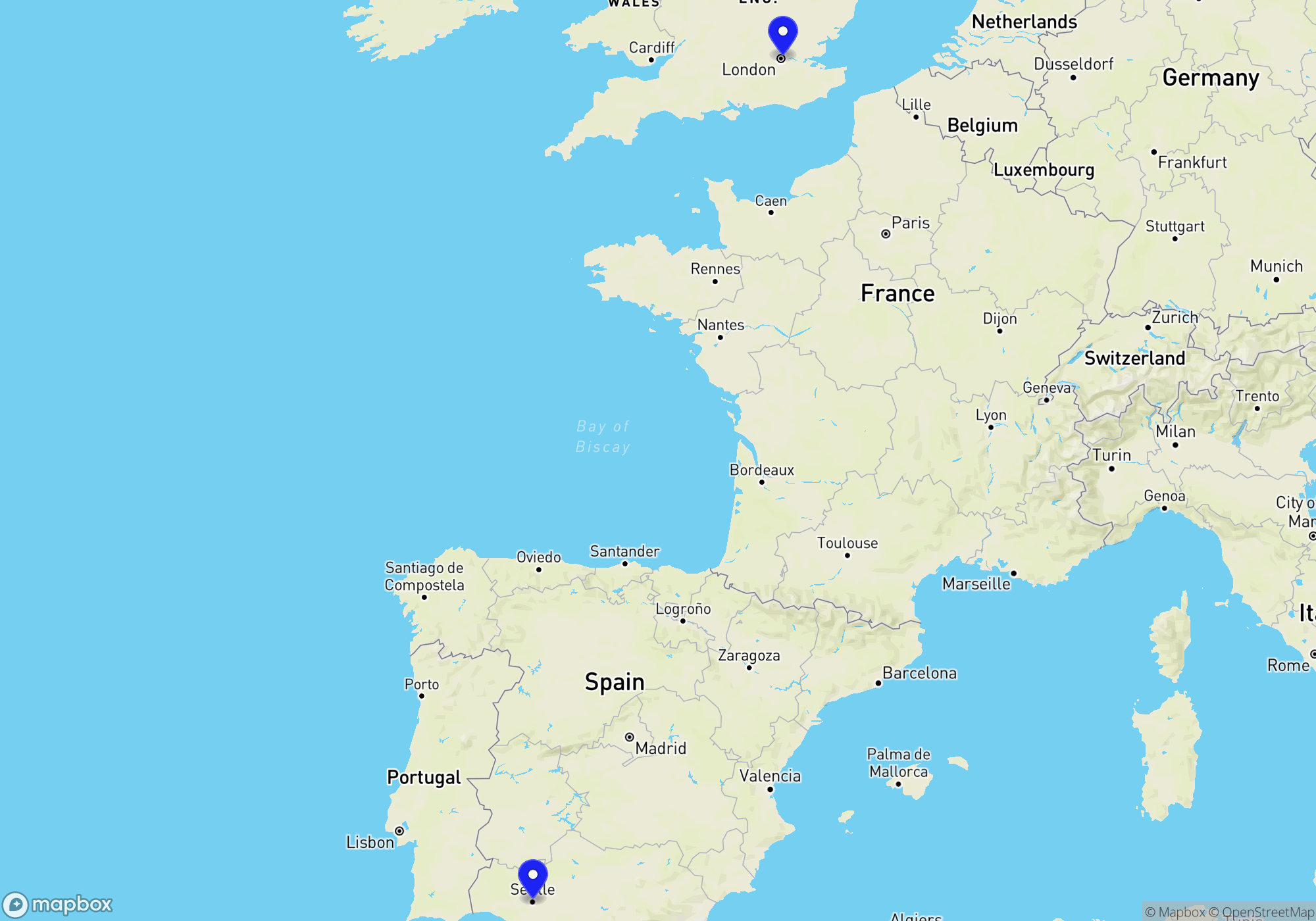
You can buy train tickets directly from the operator or through a reseller. The reseller is typically slightly more expensive (3-5%) but can provide an easier booking experience, especially if you travel with more than one operator.


These operators provide a complete journey either as a direct connection or through their partners. Even if a change of trains is involved, it’s all part of a single itinerary managed by the same train company or its partners, offering a smoother and more coordinated travel experience.

Some operators don’t run direct trains the whole way, but they serve either the departure or arrival station. In many cases, you can combine two of these operators to complete your journey by changing trains along the way. This is often a flexible and budget-friendly way to travel — especially if you’re comfortable piecing together your own itinerary.
Just keep in mind that these are separate journeys, which means a delay on the first leg could cause you to miss the second without automatic compensation or rebooking. It’s a great option for confident travelers who don’t mind a bit of extra planning.

Flixbus is not a rail operator but a long-distance bus service. However, for traveling from London to Seville by train, travelers can use a combination of train services operated by multiple rail operators such as Eurostar, TGV, and Renfe. Eurostar provides high-speed train services through the Channel Tunnel from London to cities like Paris and Brussels. Their trains offer several classes, including Standard, Standard Premier, and Business Premier, each providing different levels of comfort and amenities. Passengers can expect spacious seating, power outlets, free Wi-Fi in certain classes, and access to a cafe-bar offering refreshments. Eurostar’s customer support is accessible through phone and online help, providing travel information and assistance for bookings and inquiries.
From Paris, travelers can connect to TGV trains operated by SNCF, the national railway company of France. TGV high-speed trains are known for their speed and efficiency, offering different classes such as Standard and First Class. Amenities include comfortable seating, power sockets, and food and beverage services available through onboard bistros or carts. SNCF customer support is available via their website, phone, and app, where travelers can receive assistance regarding their journey, including bookings and real-time travel updates.
Upon reaching Spain, Renfe operates the Spanish rail network, with AVE trains providing high-speed connections between major cities such as Barcelona and Seville. AVE trains offer Primera (First) and Turista (Standard) classes, both featuring air-conditioned cabins, comfortable seating, and dining options ranging from trolley service to onboard cafes. Renfe offers customer support through their website, phone, and at stations, where staff can assist with travel information, scheduling, and booking inquiries.
These combined rail services offer a comprehensive way to travel from London to Seville, emphasizing comfort, speed, and convenience with extensive customer support options for a smooth journey.
The Interrail Global Pass is valid for travel from London to Seville, but for UK residents, it would not cover travel within the UK. You would need separate tickets for domestic UK travel. The Interrail One Country Pass is not applicable since it covers travel within a single country, and there isn’t a single country pass for multiple countries. The Eurail Pass is valid for non-EU residents traveling from London to Seville; however, it also requires a separate ticket for travel within the UK.
Upon arriving in Seville by train, local transportation options offer convenient ways to navigate the city. The tram, known as MetroCentro, offers a short route from Plaza Nueva to San Bernardo, passing through key central locations, which is ideal for exploring the historic center. The metro, or Metro de Sevilla, consists of a single line that runs from Ciudad Expo to Olivar de Quintos, providing a quick way to travel between suburban areas and the city center, intersecting with the bus network at certain points. Taxis are plentiful and generally affordable, with taxi ranks located at train stations, major hotels, and popular areas around the city. Alternatively, ridesharing services like Uber are also available, providing more personalized transport solutions. The local bus network, TUSSAM, covers extensive routes throughout Seville, connecting neighborhoods and key spots, with buses running frequently and ticket options available for single rides or day passes. Additionally, Seville boasts an extensive cycling infrastructure, and bike rental services, such as SEVici, offer a popular way to explore the city’s flat terrain and scenic routes.
Seville is a key hub in Spain’s rail network, offering numerous connections to various domestic and international destinations. Domestically, one of the most popular routes is the high-speed AVE train service to Madrid. This service links Seville’s Santa Justa station to Madrid’s Atocha station in approximately 2.5 hours. Another important domestic connection is to Barcelona, also via the AVE service, which takes around 5.5 hours. Travelers can also reach Valencia on a direct train that takes about 4 hours. Málaga is accessible via the AVANT or regular ALVIA trains, taking about 2 hours, providing convenient access to the Costa del Sol. Additionally, connections to Cordoba are frequent and rapid, taking less than an hour.
Internationally, while there are no direct trains from Seville, passengers can travel first to Madrid or Barcelona for further connections. From Madrid, you can take an international train to destinations such as Paris via the SNCF and RENFE operated high-speed service that reaches the French capital in approximately 10 hours. Alternatively, from Barcelona, travelers can connect to trains bound for France, such as those heading to Paris in about 6.5 hours or to destinations like Marseille and Lyon via direct high-speed train services. Another option for reaching international destinations is to travel to Lisbon via a connecting service at Madrid or by taking regional services towards the border, where further connections into Portugal can be accessed. These routes make Seville an excellent starting point for both domestic and international rail journeys.
The best time to visit Seville is in the spring, particularly from March to May, when the weather is pleasantly warm, typically ranging from 17°C to 26°C (63°F to 79°F). This period offers the added advantage of coinciding with some of Seville’s most vibrant festivals, such as Semana Santa (Holy Week) and Feria de Abril (April Fair), showcasing the city’s rich cultural traditions and lively atmosphere. During these months, train travel might reflect moderate pricing, influenced by increased tourist demand for the festivals, so booking in advance is advisable. Autumn, particularly from late September to November, is another great time, with milder temperatures ranging from 15°C to 27°C (59°F to 81°F) and fewer tourists, resulting in potentially lower accommodation and travel costs. In contrast, the summer months from June to August can be extremely hot, with temperatures peaking above 35°C (95°F), making outdoor exploration uncomfortable. Winter, from December to February, sees cooler, wetter conditions with daily temperatures averaging 10°C to 18°C (50°F to 64°F), but it does offer lower prices and fewer crowds, making it an appealing option for budget-conscious travelers. When arriving by train, ensure you are aware of any schedule changes around major holidays or festivals, as demand can significantly increase.
When traveling from London to Seville by train, it’s important to pack items that will be useful both during the journey and at your destination. Ensure you have your valid passport for border crossings, as well as any necessary visas if applicable. Keep your train tickets and reservation confirmations easily accessible, either printed or in digital form. Consider packing comfortable clothing and a light jacket, as temperatures can vary on the train and in Seville. Bring a universal power adapter, as the UK uses Type G plugs while Spain uses Type C or F. Pack a small toiletry kit with essentials like a toothbrush, toothpaste, and any personal medications. A reusable water bottle and some snacks can help keep you refreshed during the journey. Entertainment such as a book, tablet, or e-reader will help pass the time, and headphones will ensure you don’t disturb other passengers. Don’t forget a portable charger to keep your devices powered. Once in Seville, having a map or downloaded navigation app can help you explore. Sunglasses, sunscreen, and a hat may be necessary for the sunny climate. Finally, consider a small backpack or daypack to carry your essentials while exploring the city.
Some content on this website is created with the assistance of generative AI. To ensure factual accuracy, all information is reviewed by an expert in European train travel. However, despite careful verification, occasional errors or updates may not be immediately reflected. © 2025 Green Company. All rights reserved.